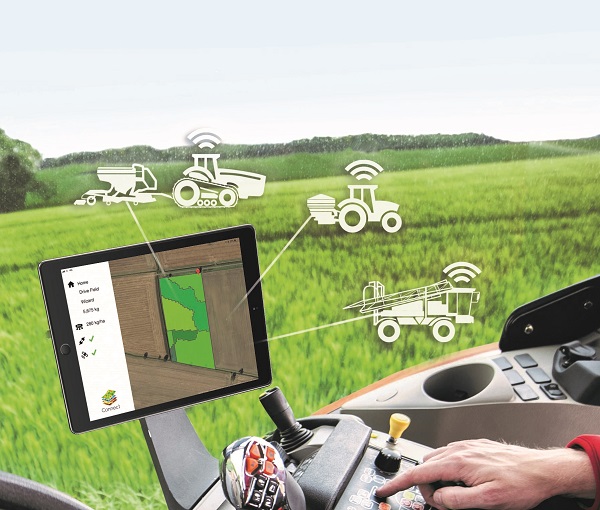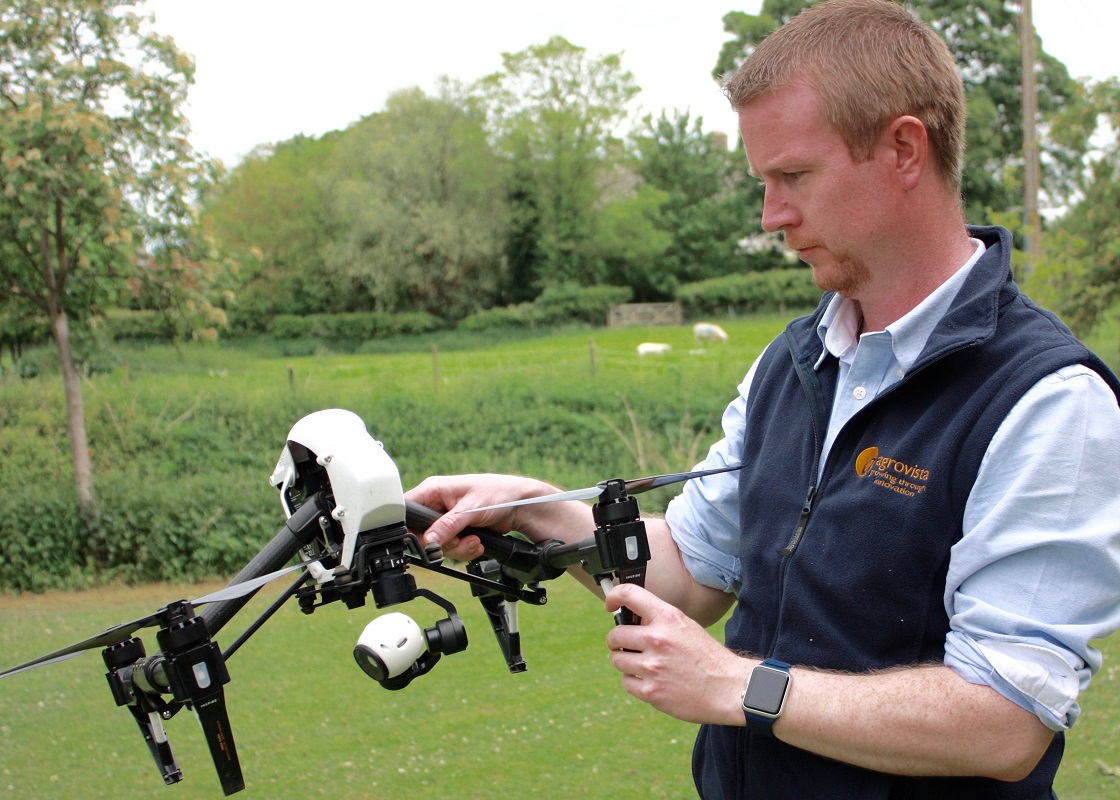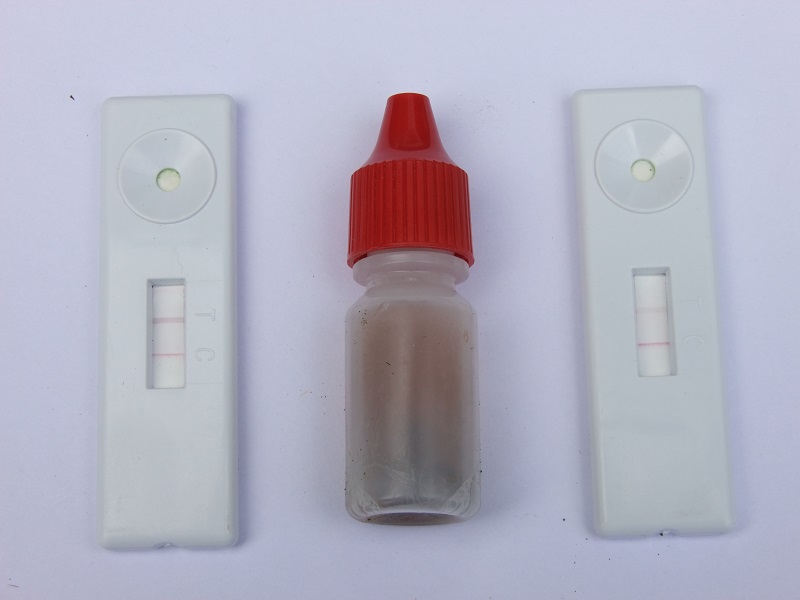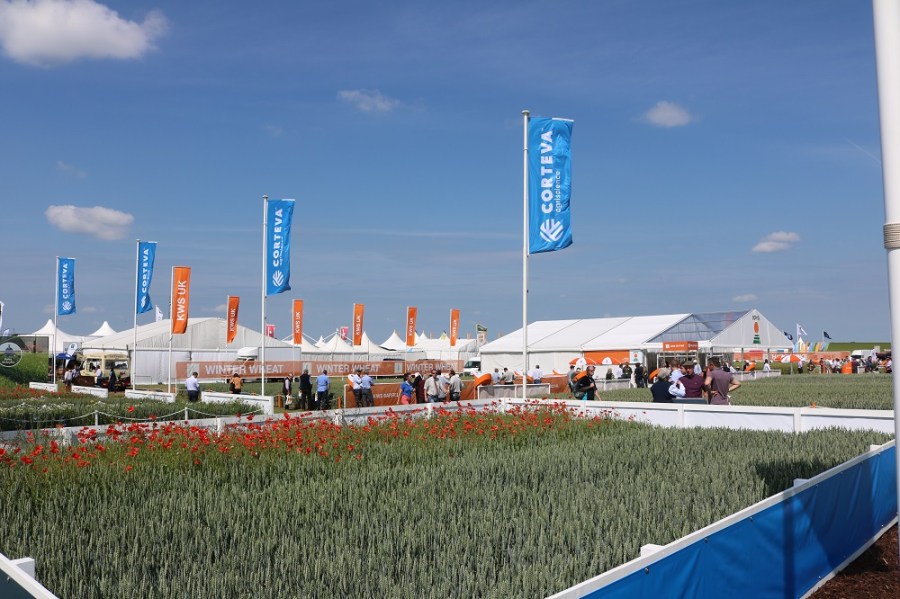The industry’s showcase event, Cereals, promised a new-look in 2018. It provided insights into the new technologies that are set to shape the future of agriculture, and drew around 18,000 visitors. CPM reports.
The soil microbial communities in our agricultural systems hold great promise for sustainable agriculture.
By Lucy de la Pasture
Like a phoenix, Cereals 2018 soared from the ashes of an event that had perhaps lost its va va vroom in recent years. Although slightly scaled-down, the new layout had agronomy in all its guises at its heart, which gave the event a bit of a buzz and stand-holders reported much more visitor engagement than has been the norm.
Soil health was a prominent theme at Cereals this year, with soil pits of various sizes featuring on a number of stands. Biggest of all was the NIAB hole, which was a fitting place to launch an industry-wide initiative for soil health, one that’s bringing together scientists, academics, industry farm advisers and farming bodies.
The new body (yet to be formally named) is being formed as a direct response to the Government’s ambition that ‘all England’s soils should be managed sustainably by 2030, supporting profitable and productive farming, and underpinning targets for clean water and air…’. The new initiative aims to work to deliver this aspiration across the UK by taking a long-term approach to understanding and improving the health of soils.
“This initiative is the opportunity to bring together the best science and practice to improve soil health,” says Dr Elizabeth Stockdale, NIAB head of farming systems, speaking at the launch.
Work will also be undertaken to establish the characteristics for soil health and on-farm approaches to monitor them over time. Dave Freeman, chair of the Professional Agricultural Analysis Group (PAAG) believes a more holistic view is necessary when it comes to soil management. “We want to focus on defining measures that help farmers understand soil health. As all soils differ, an ability to measure key factors is essential for good management and achieving improvements over time.”
On-farm advice will play a critical part and there won’t be a one-size fits all blueprint. But by working with the farming community, the emerging initiative will look to deliver a consistent and coordinated approach to improving soil health across the UK, he says.
In the coming months the partners will promote the importance of measuring soil physical condition and topsoil organic matter alongside routine indicators for improved nutrient management.
Another soil health project was rolled out by Fera Science. Their Big Soil Community aims to break down the complexity of soil biology and develop an applied knowledge-base, which will support farmers in unlocking the potential of soil health.
Leading the project is Guy Thallon, who says the programme will provide a benchmark of soil biodiversity at scale – something which has never before been available. “Sustainable farming and soil health has never been higher on the agenda than it is now, which is why it’s the right time for this study to unlock the potential of soil biology.
“The soil microbial communities in our agricultural systems are incredibly rich and complex but hold great promise for sustainable agriculture. Large-scale, collaborative projects are needed to break down this complexity and move the interest of soil health into a biology space,” he says.
It’s hoped more than 1000 growers will participate in the project, which is using next generation DNA-sequencing technology to analyse the biodiversity of bacteria and fungi present in the soil, says Guy.
“We’d like to encourage as many farmers as possible to become involved with this community. The more samples that we analyse, the richer the datasets and the quicker the pace of change and understanding.”
As part of the Big Soil Community project, metagenomics will provide a census of these communities and will barcode populations across different farms and systems, he explains. “This will give farmers the ability to identify similarities and differences which associate with healthy soil conditions and enable them to review their farming practices and potentially take measures to improve the overall health of their soils.”
Farmers are being invited to join the community from June until Sept. They will be asked to collect and submit their soil samples for analysis as well as information on where the sample was taken from. Results will be returned to participants as an individual report alongside the anonymised Big Soil Community benchmarking report of all results, which provides meta-analysis and system specific descriptions of differences in microbial populations (such as standard versus low-tillage systems).
The cost to the farmer to have a sample analysed is expected to be £250, though the price model is tiered to drive participation. That means as the number of farms that take part increases, the cost for all participants will decrease.
“The more farmers that participate in the scheme, the more insights will be generated into the UK’s soil health,” he adds.
For the first time, AHDB has relinquished the variety plots that normally surround their stand. But varieties, new and old, were still plentiful at the event, with several interesting contenders for drilling this autumn.
Limagrain has seven of the 11 cereal varieties on the RL list of candidates for 2019-2020, but commanding most attention on their stand was flagship Group 4 soft wheat, LG Skyscraper. Its breeder, Ed Flatman, says he’s been waiting a long time for a wheat like Skyscraper, which he describes as a ‘breakthrough variety.’
It’s unusual for a seed house to put so much behind a variety that’s yet to earn its right to join the AHDB Recommended List proper. But Skyscraper, along with Jigsaw, has been fast-tracked through the seed multiplication stages to make 3000-4000 tonnes of seed available to growers this autumn.
“Skyscraper is a soft feed wheat (Group 4) so has more market opportunities than a hard variety, and shows good potential for distilling,” says Ed. “In my opinion it is head and shoulders above other feed wheats in terms of yield, which is 109% over control varieties.
“It’s a good-looking variety with very large ears and large grains, meaning there isn’t the usual trade-off between yield and specific weight,” he adds.
But it’s not just yield that is warranting the candidate variety so much attention. Agronomically it stands up too.
“Skyscraper looks like being a robust and flexible variety, suitable for drilling from the third week of Sept onwards and also offers a later drilling opportunity where blackgrass is a problem. It’s also early maturing –the same as JB Diego and Skyfall – so a couple of days earlier than most feed varieties,” says Ron Granger, arable technical manager for Limagrain.
“It’s a variety that will suit first or second wheat positions in the rotation and is suitable for all regions in the UK,” he adds.
The disease profile of Skyscraper is also relatively strong, with ratings of 8 for yellow rust, 6 for brown rust, 5.9 for septoria and resistance to orange wheat blossom midge. In common with many Limagrain varieties, it’s taller than some but Ron believes these perform better than shorter-strawed varieties with appropriate PGR inputs. It’s likely to be rated a 7 for lodging, he predicts.
Syngenta may have a hard act to follow after the success of Graham and Shabras, but there was strong interest in their newest winter wheat variety, Gleam, at the event, according to the company’s seeds marketing manager, Tracy Creasy.
Already on the 2018-2019 RL, Gleam is a hard feed wheat (Group 4) with yields 105% of control varieties and follows in the footsteps of its predecessors as far as disease resistance is concerned.
“It has produced high yields consistently over the past three seasons and performs exceptionally well in the East. But what sets Gleam apart is that it combines yield with characteristics that make it easy to manage,” she says.
“With its strong Septoria tritici resistance, 6.2 on the RL, Gleam makes a good choice for growers wanting high yield potential plus the reassurance of resilience if fungicide spray timings become compromised.”
Gleam’s combination of relatively early maturity plus stiff straw makes it a useful choice to ease time pressures at harvest, points out Tracy. This in combination with its flexible drilling window from the first week of Sept to after Christmas, due to the variety’s high tillering capacity and tiller maintenance, can be useful in blackgrass situations, she adds, by allowing longer windows for stale seedbeds.
“With the prospect of having to delay winter wheat drilling until after peak aphid activity in the autumn, as a way of managing barley yellow dwarf virus risk without neonicotinoid seed treatment chemistry, drilling date flexibility is a useful option to have,” she says.
In anticipation of a keen uptake by growers this autumn, Syngenta are expecting Gleam to gain a 3-4% market share in its first season.
“Gleam is a versatile variety, well-adapted to all regions, as well as to different positions within the rotation, and is suitable for both heavy and light soils. It also has orange wheat blossom midge resistance, which gives added security in a year such as this.”
Also new for this autumn is Hyvido winter barley variety Belmont. Syngenta’s Mark Bullen describes Belmont as a next generation hybrid, with much better quality and agronomic traits. It also boasts a fairly impressive yield capability of 111% of control varieties in RL trials.
Hyvido varieties have seen a surge of interest over recent years, says Mark. “A third of the winter barley area is now in Hyvido, partly for its high yield, but also for the benefits of its vigorous growth for competing against blackgrass. Belmont will provide similar suppression of blackgrass as sister varieties Bazooka and Belfry.”
Another RL candidate in the spotlight at Cereals was the oilseed rape variety PT279CL from Corteva Pioneer. It’s of special significance because it’s the first Clearfield hybrid variety to be considered in RL trials.
“The RL consider the Clearfield trait to be a balancing feature of low importance so very few varieties with the trait have made RL trials,” explains Andy Stainthorpe. “With 60,000ha of Clearfield OSR now being grown and forecast to keep rising, farmers are attaching more importance to the trait.”
But PT279CL has made it through to the RL candidate list on its own merits, with a yield that has parity to non-Clearfield genetics, says Andy.
“Growers are appreciating the value of a herbicide tolerance trait that’s not transgenic. Initial worries about controlling volunteers have proved unfounded and growers are finding Clearfield a useful tool to manage high erucic acid weeds and OSR volunteers.
“Herbicide application is post-emergence under the Clearfield system which means growers don’t have to commit to a pre-emergence spray, particularly valuable since the loss of the neonicotinoids,” he adds.
Pioneer will have a limited tonnage of PT279CL available this autumn but expect supplies to be taken up very quickly.

New iPad app, Omnia Connect, was on display at the Hutchinsons stand. The nifty software eliminates the need for ISOBUS when making variable rate applications by providing instant data transfer using the cloud. One of the advantages of Connect is that it provides a low-cost entry into variable rate application. It can be used across multiple machines and operations, so there’s no need to go out and buy any new expensive machinery. Connect enables variable rate control on existing machines, with no need for autosteer as it uses the GPS within the iPad and there’s no expensive machine unlock codes. Connect is compatible with a wide range of machinery including Amazone, KRM, Kuhn, Väderstad, Horsch, Mzuri, Sky, RDS and more.

Agrovista gave a sneaky peak into the capabilities of their Axis 2.0 software, the latest version of the company’s cloud-based data platform. Axis was developed to give users instant access to crop management information, from field records to yield maps, any device connected to the internet.
The update will provide users with a much more powerful data collection and analysis tool and will integrate Agrovista’s drone imagery service to provide a seamless hub for data management, says Lewis McKerrow.

Pioneering work from Newcastle University, working with diagnostics company Mologic, has resulted in a ‘pregnancy-style’ test which can be used on the farm to quickly detect the presence of herbicide resistance in blackgrass. The test consists of a lateral flow device which gives a positive (left) or negative result, and a plastic bottle containing three ball-bearings to break up the leaf tissue to provide a test solution. It will be available to growers this autumn after it was unveiled at Cereals.
Sensitive enough to detect resistance in the early stages of blackgrass growth and giving a result in minutes, the new Blackgrass REsistance Diagnostic tool (BReD) allows farmers to map non-target site herbicide resistance in populations of blackgrass across the farm, giving rapid feedback on the effectiveness of weed control measures.




